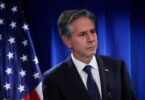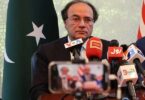Cash payments are made on monthly basis in informal sector of the economy including domestic servants, salesmen employed in small business houses and even to employees of in the regional newspapers. In rural areas majority of farmers could not deposit their savings from agriculture income in banks for a number of cogent reasons. In the decade of 1960s the government wanted to bring the rural areas under the ambit of financial inclusions by expanding the banking network of private banks and establishing and agro-based industries. This policy was torpedoed by nationalizing banks and small scale industries like rice husking mills along with medium and large scale industries by Z.A Bhutto government.
Pakistan’s low standing in terms of financial inclusion has made important for key government stakeholders to develop financial inclusion strategy. The Prime Minister has approved a five year plan for enhanced National Inclusion strategy (NFIS) which is great step towards development of the financial inclusion performance. It is one of the important factors for achieving economic growth target. Financial inclusion acts as abridge that facilitates fuller participation of financially excluded sectors of the country’s economy. It is a mechanism through which a developing country like Pakistan can achieve inclusive growth by connecting contributions of marginalized people in urban areas and rural population segment of the country with rest of the economy.
Globally financial inclusion is on the rise. Accordingto2017 Global Financial Inclusion data, 1.2billion people have bank accounts since 2011. The share of adults who have bank accounts with financial institutions rose from62 percent to 69 percent. But in regard to women it remained nine percentage points less than men in developing countries. In Pakistan digital economy is increasing but there is lack of consumers’ confidence in digital payments. Likewise the Percentage of receiving wages through bank accounts is not more than three percent.
It is impossible to achieve the targets of sustainable development goals if people are not brought into the banking system. People seek financial services with greater security and privacy. Saving accounts make it easier to save so people are motivated to save more and more. Increasing outreach of banks in rural areas can help reduce poverty by significant percentage. The farmers can increase their earnings by depositing them into bank accounts. But frequent changes in the prudential regulations in the wake of fake bank accounts scandal make them reluctant to open bank accounts after the media reports of mysterious transfer of money to accounts of poor people in the provinces of Sindh and Punjab.
Financial inclusion is facilitated by increase in literacy rate. Federal Education Minister had informed a Senate Committee that literacy rate had declined from 60 percent to 58 percent over the past two years. Enhanced literacy rate enable people to choose and use different financial products like payment through cheques and money withdrawal from ATMs.
Opening bank account is the first step and not the end goal. Transaction accounts must be useful and secure as it serves as a gateway to other to other financial products such as savings, credit and insurance. Governments and private sectors can play a significant role can accelerate their usage by depositing wages versus cash. Cash payment also runs the risk of payment to labourers below the minimum wage rate fixed by the government at the time of announcement of annual budgets.
Essential issues related to financial inclusion policies is keeping track of how the policy interventions are creating impact on financial and social performance indicators. For this there needs to be monitoring and evaluation mechanism in place.
Another obstacle for financial inclusion is consumers’ protection and regulation. Although there are many payment services like mobile money and e-money, it is critical to establish secure and reliable platforms to protect data privacy and funds. According to National Financial Inclusion Strategy the target is to increase from 10 percent of adults with transactions or other types of financial accounts to 50 percent by 2020. The NIFS predicts that 25 percent of adult females will have formal accounts by 2020 up by 2.9 percent in 2014. These are ambitious targets and in order to achieve them it is important to cater for the gender barriers. It is not possible to achieve these goals if accessibility issues are not dealt with.






